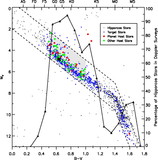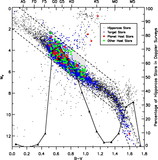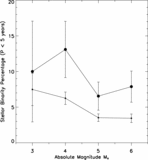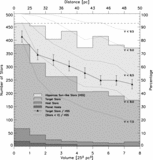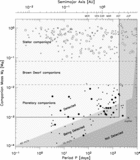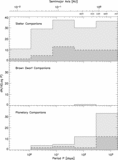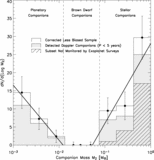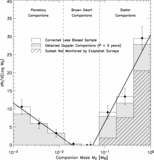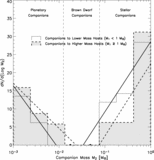Image Details
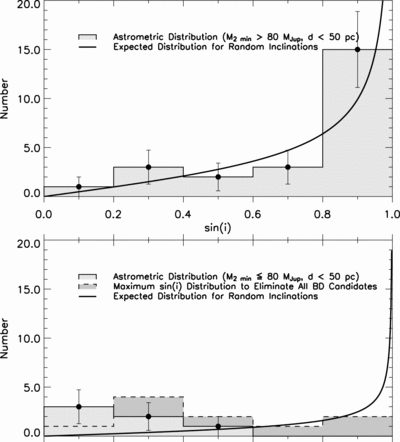
Caption: Fig. 7.
Astrometric inclination distribution for close companions (﹩d< 50﹩ pc) with a minimum mass larger than ﹩80M_{\mathrm{J}\,}﹩ (Doppler stellar candidates; top) and between ﹩13M_{\mathrm{J}\,}﹩ and ﹩80M_{\mathrm{J}\,}﹩ (Doppler brown dwarf candidates; bottom). There are 24 companions with astrometric solutions and a minimum mass in the stellar regime and six with a minimum mass in the brown dwarf regime. The inclination distribution is approximately random for companions with a minimum mass in the stellar regime whereas it is biased toward low inclinations for companions in the brown dwarf regime. All six astrometric determinations of ﹩\mathrm{sin}\,i﹩ for brown dwarf candidates put their true mass in the stellar regime. Also shown is the distribution of the maximum values of ﹩\mathrm{sin}\,i﹩ that would place the true masses of the remaining 10 brown dwarf candidates without astrometric or visual solutions in the stellar regime. A distribution less biased than the observed ﹩\mathrm{sin}\,i﹩ distribution would be required. This strongly suggests that the 10 candidates without astrometric or visual solutions will also have masses in the stellar regime. Therefore, astrometric corrections leave us with no solid candidates with masses in the brown dwarf region. Two weak brown dwarf candidates are worth mentioning. HD 114762 has a minimum mass below ﹩13M_{\mathrm{J}\,}﹩. However, to convert minimum mass to mass, we have assumed random inclinations and have used ﹩\left< \mathrm{sin}\,i\right>\approx 0.785﹩. This conversion puts the estimated mass of HD 114762 in the brown dwarf regime (﹩M\gtrsim 13M_{\mathrm{J}\,}﹩). In Fig. 5, this is the only companion lying in the brown dwarf regime. Another weak brown dwarf candidate is the only candidate that requires a ﹩\mathrm{sin}\,i< 0.2﹩ to place its mass in the stellar regime.
Copyright and Terms & Conditions
© 2006. The American Astronomical Society. All rights reserved. Printed in U.S.A.


